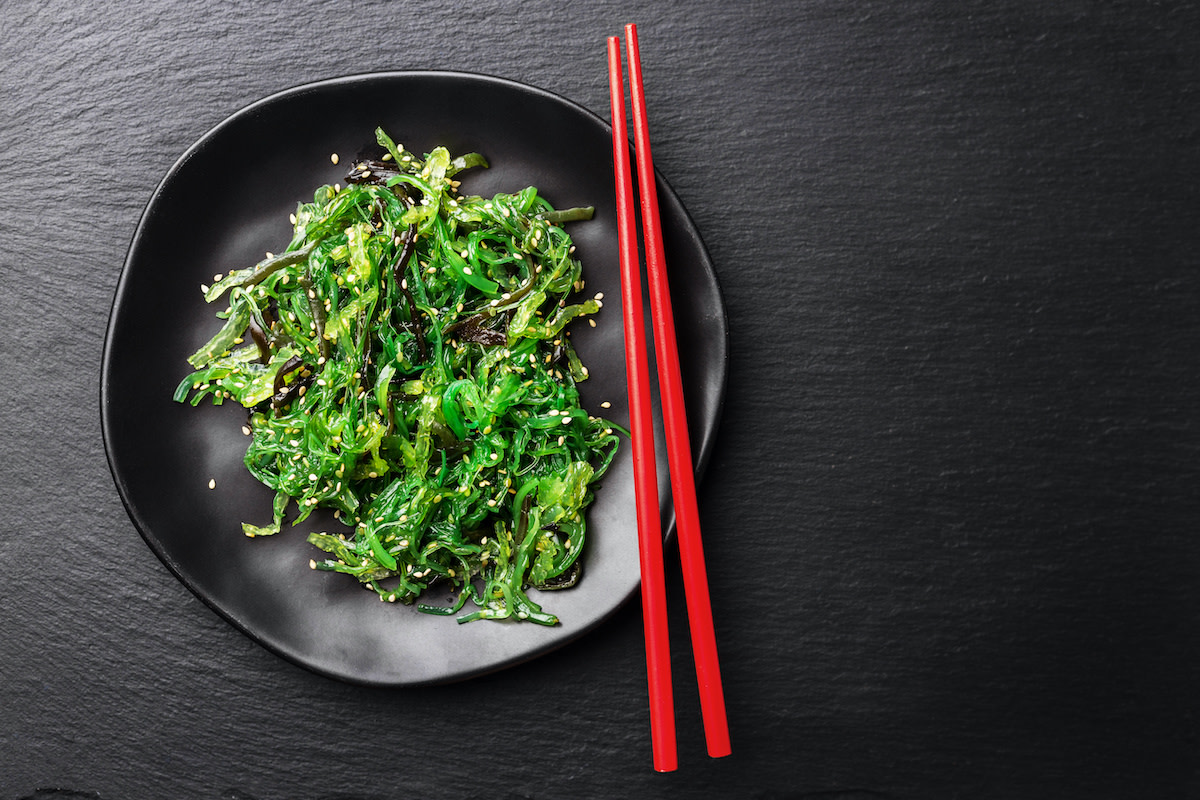Wakame Seaweed: 3 Ways to Use Wakame in Your Cooking
Written by MasterClass
Last updated: Jun 7, 2021 • 2 min read
Green-brown wakame seaweed is a versatile, textural marvel: Soft enough to slip through a light broth, with enough of a bite to hold its own in a chilled salad.
Learn From the Best
What Is Wakame?
Wakame (Undaria pinnatifida) is a marine algae and type of edible seaweed commonly used in Japanese cuisine. Though wakame grows wild in Australia, it is farmed in Japan and Korea, where it is used in numerous culinary preparations, such as sunomono, makizushi, and miso soup. Wakame is among the most-used varieties of dried seaweed, along with nori, kombu (kelp), and hijiki, a savory, dark-brown seaweed that grows wild along the coasts of Japan.
What Are the Benefits of Wakame?
Like most sea vegetables, wakame seaweed is fairly nutritious: it’s rich in minerals like calcium, manganese, folate, magnesium, and iodine, and a good source of omega-3 fatty acids.
Wakame also contains a carotenoid called fucoxanthin, which has an especially high antioxidant capacity—13.5 times that of vitamin E.
How to Rehydrate Wakame
To rehydrate, soak dried wakame strips in a bowl of warm water for a few minutes, then transfer to an ice bath. Drain well, and squeeze to remove any excess water before cutting the strips to a size of your preference. (Alternatively, you can also blanch wakame for a few seconds in boiling water, before soaking in ice water, to bring out its electric-green color.)
3 Ways to Cook With Wakame
In Japanese cuisine, wakame is prized for its satiny texture and mild flavor. You can find dried wakame with the other dried seaweeds in most Asian grocery stores or online. Here are a few ways to cook with it:
- 1. In soups: You can add wakame strips to side dishes like miso soup or bowls of ramen.
- 2. Add to salad: Raw, rehydrated wakame is often cut into thin strips and seasoned with soy sauce, mirin, sesame oil, and rice vinegar for a bright and crunchy seaweed salad.
- 3. In sunomono: Wakame’s texture is a perfect fit for this lightly pickled salad, alongside crunchy, cool cucumber, thinly-sliced scallion, and sesame seeds.
What Is the Difference Between Wakame and Nori?
While wakame and nori are both types of dried, edible seaweed commonly used in Asian cooking, there are a couple of key differences between the two popular ingredients:
- Nori is in sheet form. One key distinction between the two types of seaweed lies in the way it is made. Producers shred then press nori into flat, smooth sheets that they often roast before packaging it. Wakame is also sold dried but in long, thick strips that expand upon rehydration.
- Wakame requires rehydration. Wakame is usually rehydrated before use in soups, salads, and cold presentations like sunomono, where its delicate texture and light sweetness complement a range of other ingredients. Nori does not require rehydration and is used in dishes like onigiri (rice balls), nori maki (sushi rolls), and arare rice crackers.
Want to Learn More About Cooking?
Become a better chef with the MasterClass Annual Membership. Gain access to exclusive video lessons taught by the world’s best, including Niki Nakayama, Gabriela Cámara, Chef Thomas Keller, Yotam Ottolenghi, Dominique Ansel, Gordon Ramsay, Alice Waters, and more.
